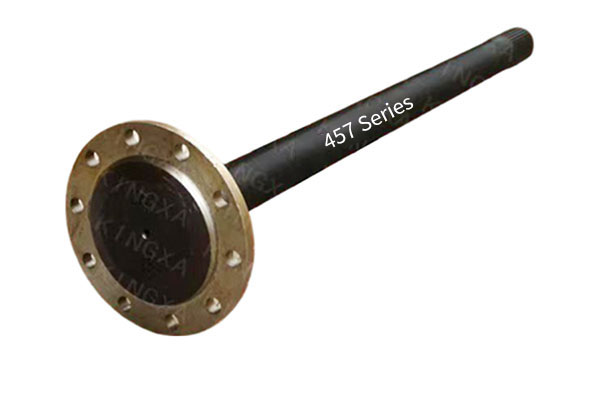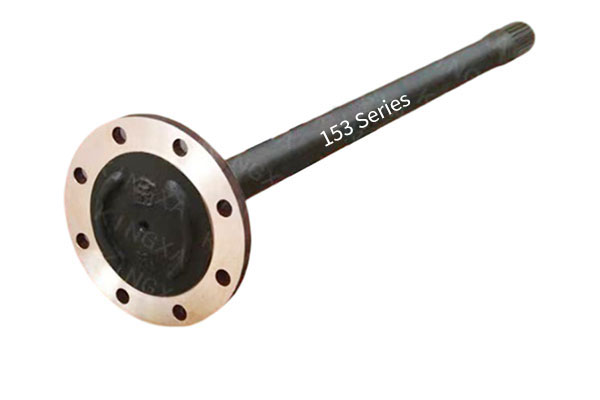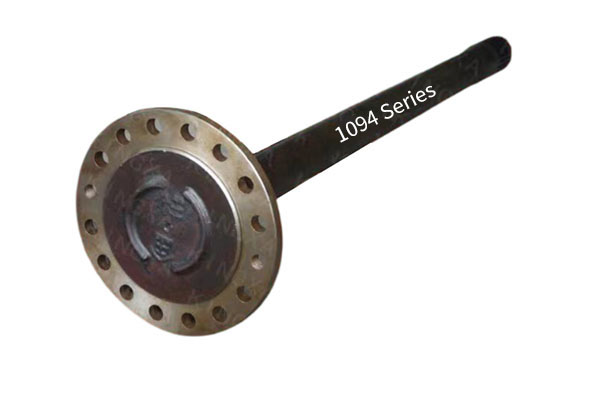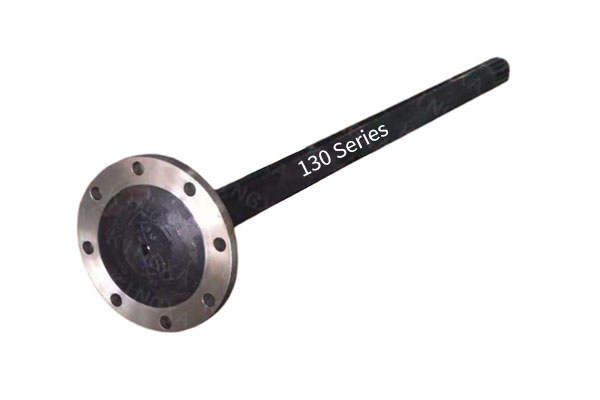How does a mid-size car rear axle half shaft perform under extreme road conditions?
Release Time : 2025-06-09
Under extreme road conditions, mid-size car rear axle half shaft faces more complex challenges than those encountered in daily driving. From muddy and bumpy country roads to gravel-covered mountain roads to snow-covered roads, each extreme environment affects the mid-size car rear axle half shaft in a unique way. It not only has to withstand abnormal torque and impact force, but also needs to maintain the stability of the transmission system under harsh conditions. Its performance is directly related to the vehicle's driving safety and passing ability.
When a vehicle is driving on muddy and slippery roads, the first challenge that the mid-size car rear axle half shaft has to deal with is insufficient adhesion. Mud reduces the friction between the tire and the ground, and the vehicle's drive wheels are prone to slipping and idling. At this time, the half shaft needs to frequently withstand the instantaneous increase in torque impact to help the vehicle get out of trouble. This repeated overload can easily cause the half shaft metal fatigue. If the half shaft material is not tough enough or there are defects in the manufacturing process, it may cause the half shaft to deform or even break. At the same time, impurities such as gravel in the mud will also penetrate into the dust cover and connection parts of the half shaft, aggravating the wear of the parts and further weakening its reliability under extreme working conditions.
Faced with rugged mountain roads or potholes, the mid-size car rear axle half shaft has to withstand complex and variable stresses. During the driving process of the vehicle, the wheels will constantly change their positions and angles due to the ups and downs of the road, which requires the half shaft to not only transmit power but also adapt to frequent angle changes. In this case, the universal joint and spline parts of the half shaft are under great pressure. If the universal joint is not flexible enough or the spline clearance is too large, the power cannot be transmitted smoothly, resulting in unstable vehicle power output and even abnormal noise. In addition, severe bumps may also cause collisions between the half shaft and other parts. If the protective measures are not in place, scratches will appear on the surface of the half shaft, which will become a stress concentration point and bury the risk of fracture.
On the road covered with ice and snow, low temperature and smooth surface bring double challenges to the mid-size car rear axle half shaft. Low temperature environment will reduce the toughness of the metal material of the half shaft, making it more brittle and hard, and reducing its impact resistance. When a vehicle accelerates, brakes or turns on an icy or snowy road, the wheels are prone to slipping or locking, causing the torque on the half shaft to change instantly. This sudden change in torque, coupled with the low-temperature brittleness of metal materials, greatly increases the risk of half shaft fracture. At the same time, the accumulated water formed after the ice and snow melt may penetrate into the sealing structure of the half shaft, freeze at low temperatures, destroy the sealing performance, cause the lubricating grease to leak, accelerate the wear of components, and affect the continuous working ability of the half shaft under icy and snowy road conditions.
When crossing a road section with deep water accumulation, mid-size car rear axle half shaft will face the problem of waterproofing and rust prevention. The accumulated water may carry mud and debris to impact the sealing part of the half shaft. Once the seal fails, water and mud enter the inside of the half shaft, which will damage the lubrication system and aggravate the wear of gears and bearings. In addition, the electrolyte in the water will also accelerate the corrosion of the metal parts of the half shaft, especially at the connection parts and welding parts. Rust will not only reduce the strength of the half shaft, but also affect its smoothness of rotation. If the vehicle frequently accelerates or decelerates sharply on the flooded road section, the torque fluctuations on the half shaft will further aggravate the damage to the components.
In soft road conditions such as deserts, mid-size car rear axle half shafts have to cope with the challenges of high temperature and high load. When a vehicle is driving on sand, the tires tend to sink. In order to maintain forward momentum, the engine needs to output greater torque, which causes the half shaft to operate under high load for a long time. Continuous high load will cause the temperature of the half shaft to rise sharply, and the high temperature in the desert environment further aggravates the heat dissipation difficulties. Excessive temperature will reduce the mechanical properties of the metal material of the half shaft, accelerate the aging and volatilization of lubricating grease, reduce the lubrication effect of the components, increase friction resistance, form a vicious cycle, and ultimately affect the service life and transmission efficiency of the half shaft.
Frequent vibration and impact under extreme road conditions will also affect the installation and fixing parts of the mid-size car rear axle half shaft. The resonance generated during vehicle driving may cause the connecting bolts of the half shaft and the differential, wheel hub and other components to loosen. Once the bolts are loose, the working state of the half shaft will be unbalanced, causing violent shaking and abnormal noise, and in severe cases, the half shaft may even fall off, causing the vehicle to lose control. In addition, long-term vibration will also cause the positioning structure of the half shaft to shift, affecting the accuracy of power transmission and reducing the vehicle's handling performance and driving safety.
In order to cope with the challenges of extreme road conditions, mid-size car rear axle half shaft has been continuously improved in design and manufacturing. High-strength and high-toughness alloy materials are used to enhance the impact and fatigue resistance of the half shaft; the structural design of the universal joint and spline is optimized to improve its transmission efficiency and stability at complex angles; sealing protection measures are strengthened to prevent mud, sand, water, etc. from invading the interior; the heat dissipation design is improved to reduce the temperature during high-load operation. These technical improvements allow mid-size car rear axle half shaft to still work reliably under extreme road conditions, ensuring that the vehicle can smoothly pass through various difficulties and obstacles, showing strong environmental adaptability and performance stability.







